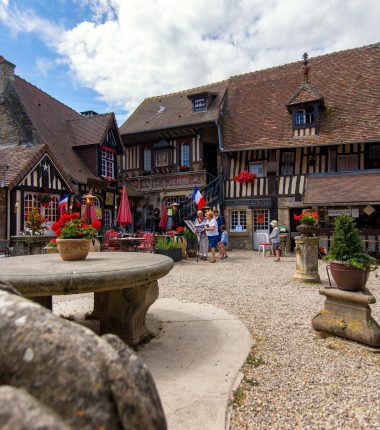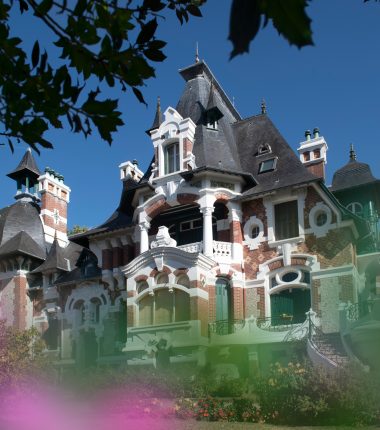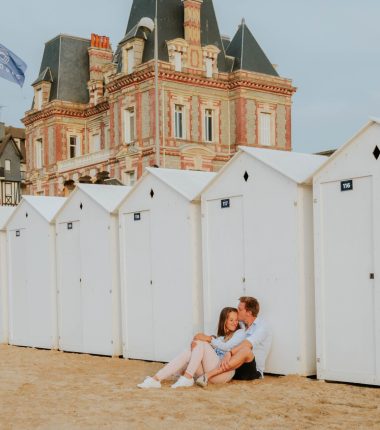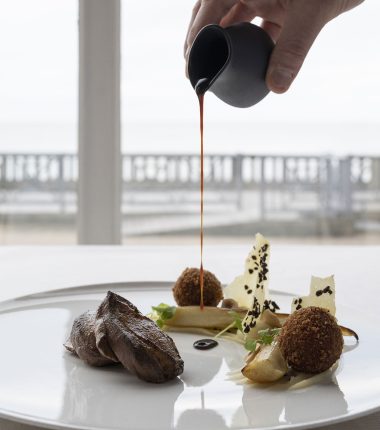Yes, Normandy Cabourg Pays d'Auge is a very small territory. But explore it in depth to discover that it is of incomparable richness: especially in terms of architecture. If you started your weekend with a walk on the beach and lunch by the sea, you can continue with a visit that gives pride of place to the exceptional buildings of the Normandy region.
Visiting a region with varied architectural walks? This is how we suggest you organize your next excursion with us, in Normandy. Belle Époque residences, historic buildings or even religious buildings: on the way for a little architectural tour!
1/ Belle Époque villas and Norman architecture
Cabourg and the Villa of Time Regained
Half-timbered houses and grand mansions: the city of Cabourg does not fail to surprise with its varied architecture and its Belle Époque villas.
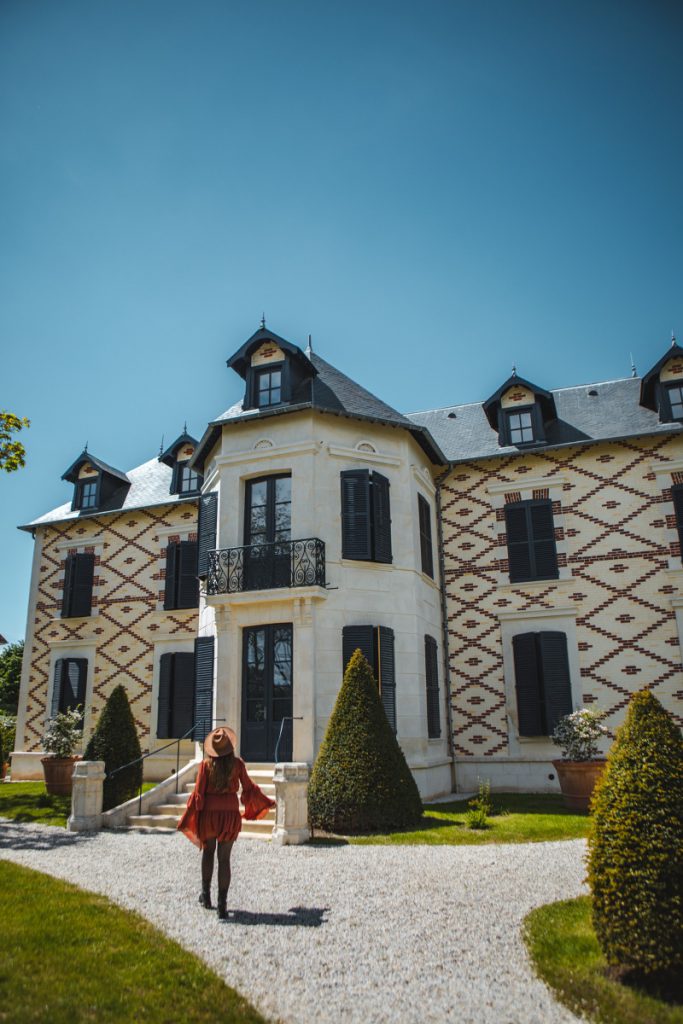
Among the most iconic places, we obviously find the Villa du Temps retrouvé (15 avenue du president Raymond Poincaré), which pays homage to one of the city's leading figures.
Hint: madeleine. Yes, it is good Marcel Proust. Many artists are exhibited there, and lounges have been refurbished as in the old days with furniture from the Belle Époque.
If this walk was not enough to satisfy your architectural desires, discover the many other villas in Cabourg such as:
- La Marie Antoinette villa (17 avenue Aristide Briand), a combination of the neo-Norman style and the medieval spirit (with its sculptures and grotesques). You can observe ceramics, representing animals, between the half-timberings.
- La Jerome and Mamika villa (1 and 3 avenue André Prempain), built for Mayor Charles Bertrand. It has a very rich architectural style, thanks in particular to the ceramic decorations.
- La Campanile villa (4 avenue du Commandant Touchard), of classic typology. It has a polygonal tower covered with an Italian roof terrace, as well as a belvedere.
The circuit of the villas of Houlgate
City Houlgate was also marked by new constructions in the second half of the XNUMXthe century. Here is a non-exhaustive list of the most emblematic villas:
- La villa The good cottage (23 and 40 rue Henri Dobert), neo-Norman style, built for Gaston Menier.
- La Villa Armengaud (11 rue Henri Dobert), neo-Louis XIII style, built by Baumier for Charles Armengaud. The composer Jacques Ibert used to take up residence there. This is also where he composed a number of his works.
- La Villa Bertha (7 avenue Leonard Pillu), neo-renaissance style, built by the architect Édouard Singery.
- La Villa L'Annonciade (8 avenue des Ormes), in neo-Norman style enhanced with neo-Gothic figures, built by the architect Lewicki.
- La Villa Le Clos des Rosiers (10 rue Henri Jouvet), Renaissance style, built for Senator Henri Bourdon.
- La Villa Bel Shade (1 rue Victor Delise), characterized by a polygonal belvedere and a fretted gable.
- La villa Les Liers (9 rue Baumier), built by the architect Baumier for Antoine Lasnier.
- La Villa The Fireflies (4 rue Baumier), having belonged to the Lumière brothers.
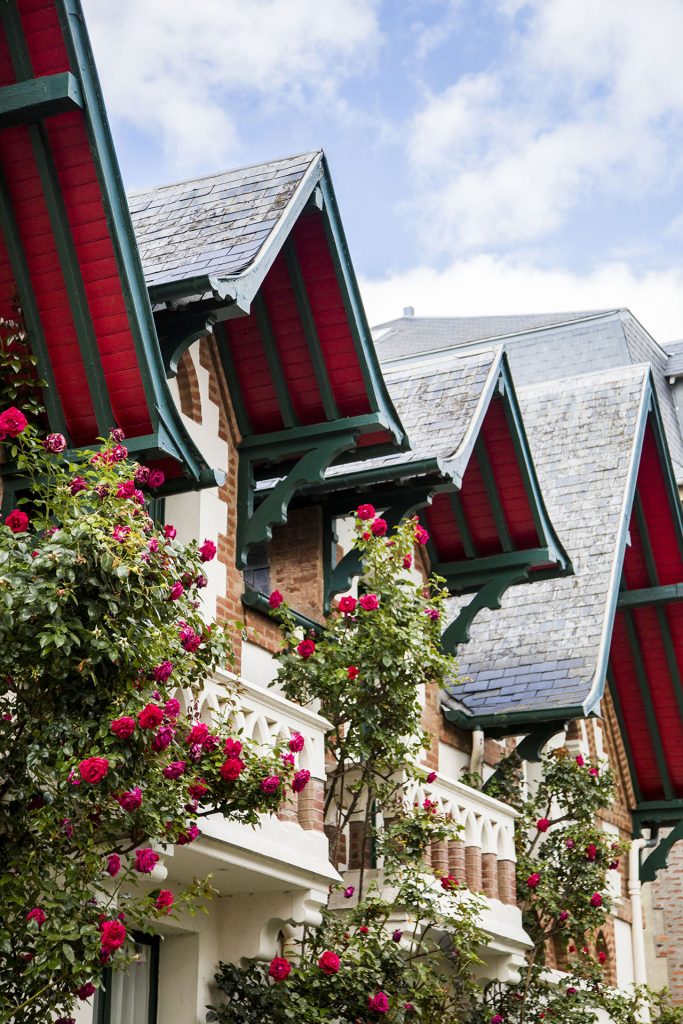
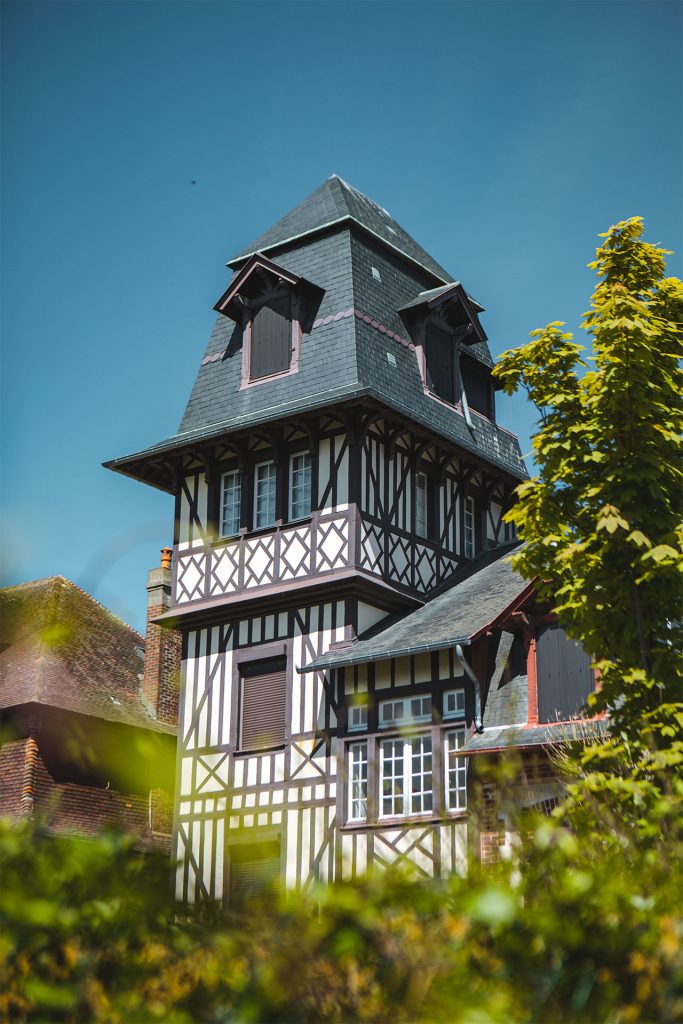
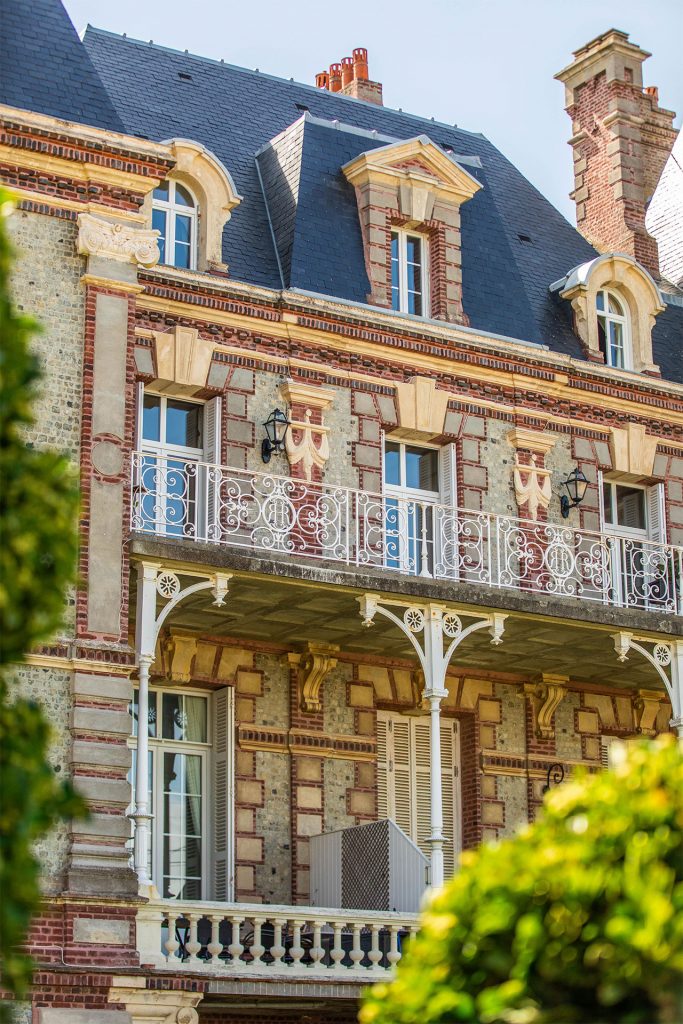
As for Cabourg, a complete circuit of the villas of Houlgate is available. And icing on the cake: the two circuits are on the back of each other.
The “Big” Hotels
The first, the Grand Hôtel de Cabourg. Imposing, it has nothing to envy to the luxurious establishments that welcome movie stars during the Cannes Film Festival. You can stay in a room with a sea view, dine in a gourmet restaurant and enjoy the Casino, located just next door, until nightfall. The second, theformer Grand Hotel de Houlgate. Impressive, it has been listed as a Historic Monument since 2000.
The finials of the Poterie du Mesnil de Bavent
It is often said that “the devil is in the details”. Normandy, and more particularly the architecture of our territory, is no exception to the rule. Among the most remarkable ornaments are the finials, a sealing and decorative element that is placed on the roof, often above an awl, at the end of a ridge or at the point of a conical or domed roof.
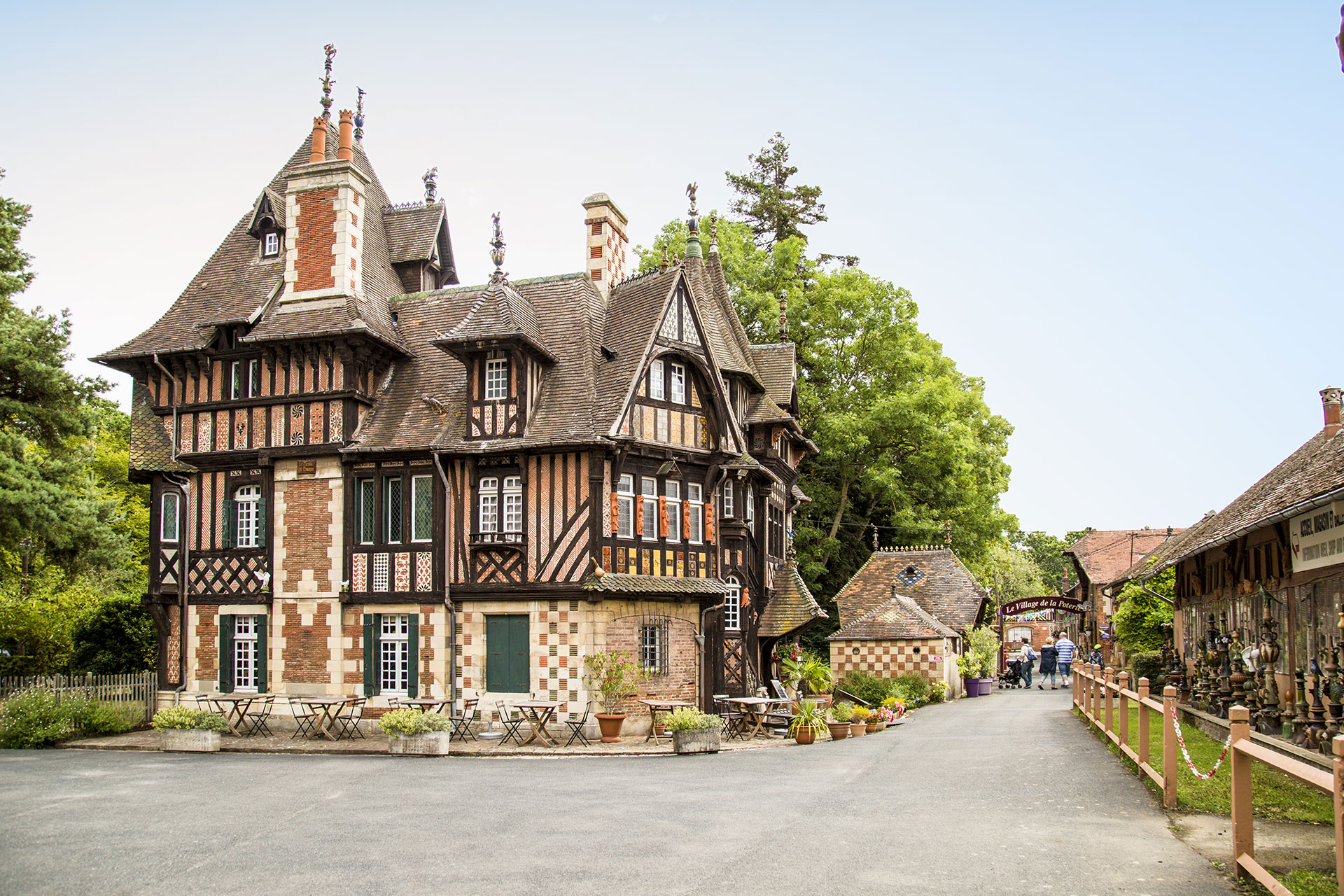
It consists of three elements: the ridge tile (at the base), the central element, the crowning (or head of the cob).
Its manufacturing steps are six in number:
- Preparation in Limoges of clay loaves.
- Creation of parts using stamping and turning techniques.
- Embedding of parts.
- First drying.
- Baking of the pieces in an oven, the temperature of which rises gradually over 48 hours, until it reaches more than 1140°C (no, that's not a typing error).
- Enamelling of the piece, which will then be fired again, this time in an enamel kiln.
It is now possible to go and observe the production, at the Pottery of Mesnil de Bavent : an emblematic place of the region and the city of Bavent which could have disappeared in 1987. It was without counting on Martine Kay-Mouat who, after having done her apprenticeship there, decided to buy the workshops. The goal ? Saving the manufacture (and know-how) of finials. Today, the pottery is labeled living heritage company and Dominique, Martine's daughter, continues this same work.
2/ Religious architecture
A mythical church
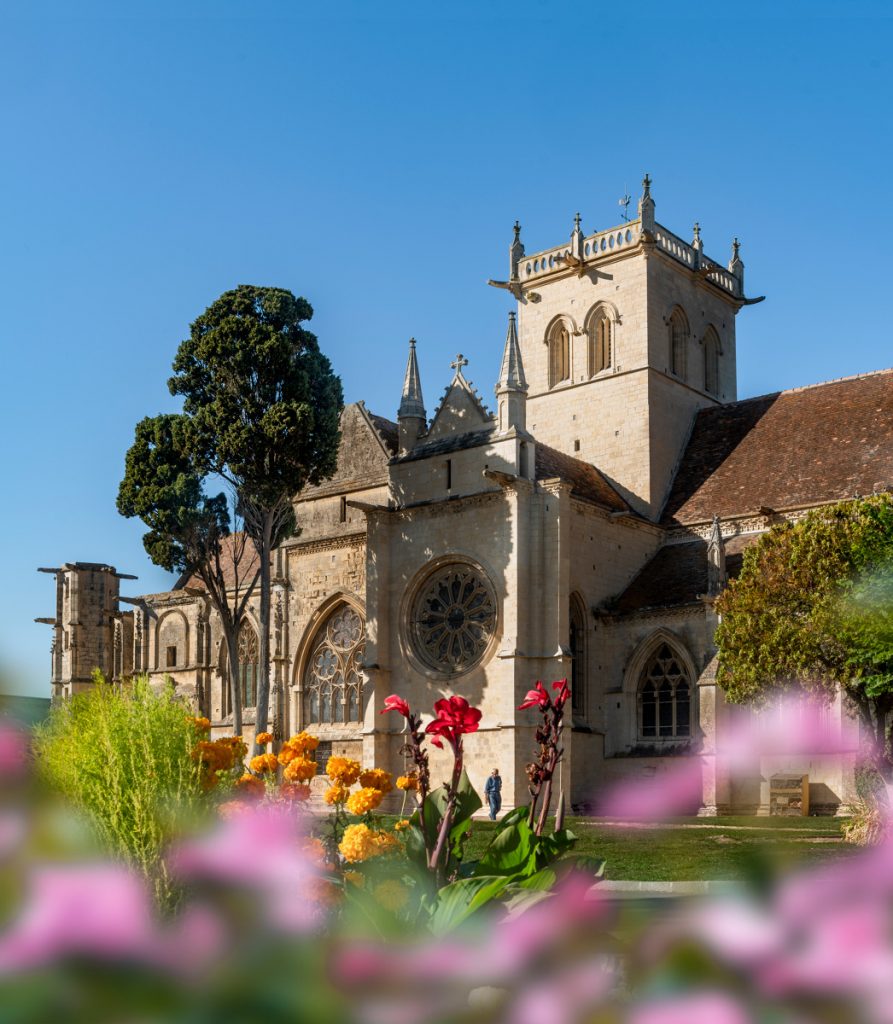
It goes without saying that the Pays d'Auge is full of remarkable religious buildings.
First there is theNotre-Dame church. Located in the heart of the town of Dives-sur-Mer (Lisieux Street), it has no less than four pillars which form the square tower, as well as a Romanesque arcade from the XNUMXthe century.
Gothic in style, it has preserved at the base of its tower the remains of a first pilgrimage building, which dates back to the same period.
These elements are the oldest still visible. Inside, you will be able to marvel at the stained glass windows, which tell (in a pictorial way) the legend of Christ Saint-Sauveur.
Notre-Dame Church — Rue de Lisieux, 14160 Dives-sur-Mer.
An iconic chapel
To delve even further into the mysteries of Norman architecture, take the direction of Beuvron-en-Auge. This is where you will find the old parish church of Saint-Michel de Clermont-en-Auge: attached to the village of Beuvron in 1856, it is now called the “chapel of Clermont".
This church surprises with the treasures it contains, and its typical architecture of the Romanesque period (although it has been renovated several times) mixes limestone and wood. Inside, you can discover a limestone altar, XNUMXth century statuese century in polychrome stone as well as paintings dating from the XNUMXthe. A small museum, in a religious place: what more could you ask for?
And why not a circuit of charming churches passing through several towns in our territory, such as Putot-en-Auge, Grangues, hayland, Beaufour Druval ? Unusual, aristocratic, Romanesque, charming, bucolic: there are many churches that will satisfy your curiosity around a 47 km circuit. Something to combine the religious architectural heritage with the discovery of the territory.
3/ Heritage architecture
Impossible to miss the historical heritage inherited by the city of Dives-sur-Mer. Here is the ideal route to adopt, to be sure not to miss anything.
- First stop: the village of William the Conqueror. This is made up of several half-timbered Norman-style courtyards, where there are protected outdoor galleries that serve the rooms on the upper floors. Among the celebrities to have stayed in the old hostelry (which was once a post house): Henri IV, Marie de Médicis, Madame de Sévigné and Louis XIII.
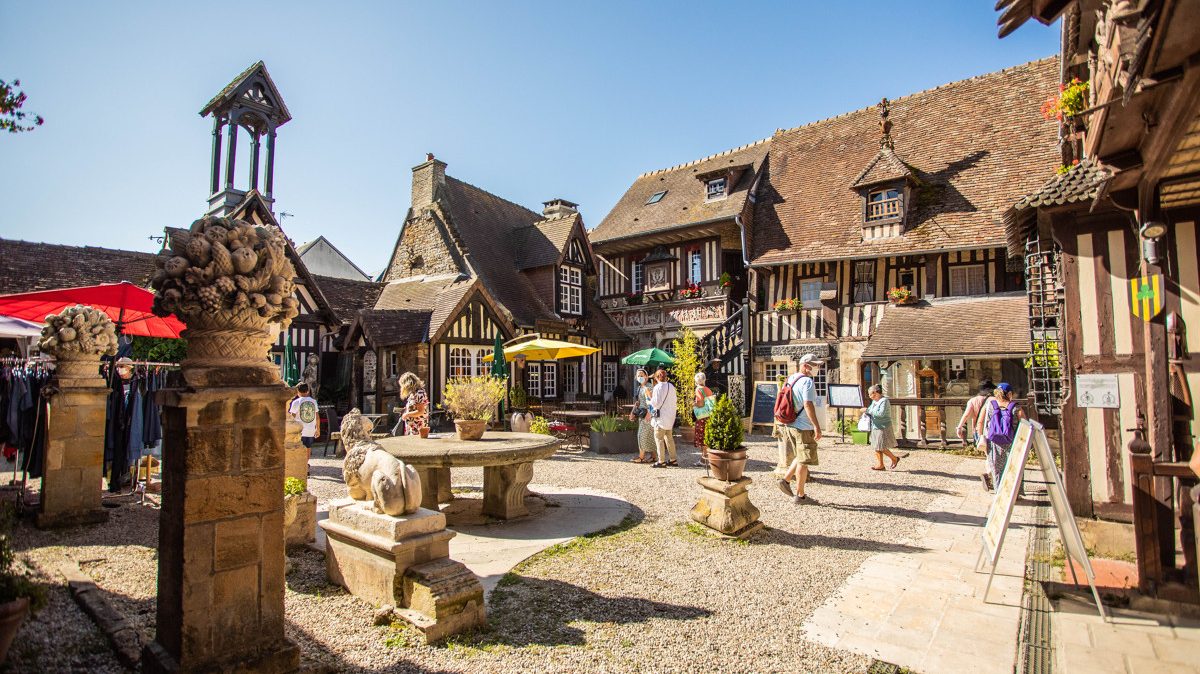
- Second stop: the medieval halls (Paul Canta Street), the oldest part of which dates from the beginning of the XNUMXthe century. They rest on 66 pillars and are covered with a framework of chestnut trees and tiles. You will find there every Saturday morning the market, but also many events throughout the year.
- Third (and last) stop: Da Costa's Blue House, where we find a surprising mosaic garden created by a worker from the former metallurgy factory in Dives-sur-Mer.
Note that it is only open in summer, during European Heritage Days and to groups, on request.
What about military architecture then?
Take a moment back into your history lessons: Normandy has, on several occasions, been the scene of wars from which no one could escape. No wonder, therefore, that some of its territories have inherited a rich military heritage. This is particularly the case of Merville-Franceville-Plage, where you can discover:
Merville Redoubt
It's about a horseshoe-shaped fortress. It was built in the XVIIIe century and is today at the heart of a major restoration programme. On the beach, you can also discover, here and there, the famous blockhouses (also called “bunkers” or “casemates”).

Merville Battery
This place, well known by locals, has a very special history. That fortification of the German army was located, on June 6, 1944 (it's time to reopen its history lessons), on the eastern flank of the Allied landings. It was bombarded several times, before being neutralized by the 9e British Parachute Battalion. But don't count on us to tell you everything. To find out more, you will have to go there, and feel (for real) the very special atmosphere that reigns there.
And if you want to continue your quest for discovery, go to meet a natural architecture, guardian of ancient treasures: the cliffs of Vaches Noires.

